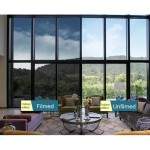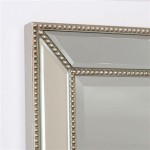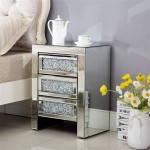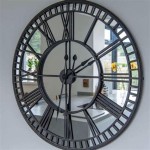Curved Mirrors in Car Headlights: Illuminating the Road Ahead
Car headlights play a crucial role in ensuring safe driving, especially during nighttime or in poor visibility conditions. While the basic function of headlights is to illuminate the road ahead, the design of these light fixtures can have a significant impact on the effectiveness and safety of the illumination. A key element in modern headlight design is the use of curved mirrors, which are integrated into the headlight unit to shape and direct the beam of light. These mirrors, often referred to as reflectors, are meticulously engineered to optimize light distribution, enhancing visibility and improving driver safety.
Understanding the Function of Curved Mirrors in Headlights
Curved mirrors play a vital role in shaping the beam of light emitted from a car's headlights. Unlike flat mirrors that reflect light at the same angle as it hits the surface, curved mirrors have a specific curvature that alters the angle of reflection. This curvature enables headlights to direct the light in a specific direction, optimizing both the intensity and distribution of the beam.
There are two primary types of curved mirrors used in headlights: concave and convex. Concave mirrors, which have a curved inward surface, are commonly used in car headlights. The inward curve focuses the light from the bulb, creating a more concentrated and powerful beam. This focused beam allows the headlights to illuminate a greater distance ahead, improving visibility for the driver. In contrast, convex mirrors, which have a curved outward surface, can spread the light more widely. While less commonly used in headlights, convex mirrors are sometimes employed in auxiliary lights or fog lights to provide broader illumination.
Optimizing Light Distribution for Safe Driving
The curvature of the mirrors in headlights is carefully designed to achieve a specific light pattern. This pattern is known as the headlight beam pattern, and it is crucial for ensuring safe and effective illumination. The beam pattern aims to provide a balance between illuminating the road ahead without blinding oncoming drivers. Typically, headlight beam patterns are designed with a specific cut-off line, which separates the main beam from the upper portion of the beam, preventing excessive glare for oncoming vehicles. This is achieved by strategically placing the light source within the headlight unit, allowing the curved mirror to direct the light in a controlled manner.
The specific beam pattern used can vary depending on the design of the headlight and the regulations in a particular region. Some common beam pattern types include:
- Low Beam: This pattern provides a wide, even beam, illuminating the road directly in front of the vehicle. It is designed to minimize glare for oncoming drivers.
- High Beam: This pattern produces a focused, long-range beam, allowing drivers to see further down the road. It is intended for use when there is no oncoming traffic, as it can be blinding in other situations.
Technological Advancements in Headlight Design
The design and technology of car headlights have evolved significantly over the years, with curved mirrors playing a vital role in these advancements. Modern headlights often incorporate features like:
- Adaptive Headlights: These systems use sensors to detect the presence of oncoming traffic or curves in the road and automatically adjust the headlight beam pattern, optimizing visibility and safety.
- LED and HID Headlights: The adoption of light-emitting diodes (LEDs) and high-intensity discharge (HID) bulbs has significantly improved the efficiency and brightness of headlights. These technologies allow for more compact and precise headlight designs, often relying on more sophisticated curved mirror systems to optimize light distribution.
- Laser Headlights: More recently, laser headlights have emerged as an advanced technology, offering even greater brightness and range. These systems often employ complex curved mirror arrangements to focus and control the intense laser light.
The integration of curved mirrors in car headlights is a testament to the ongoing efforts to improve driver safety and visibility. As automotive technology continues to evolve, we can expect further advancements in headlight design, with innovative curved mirror systems playing a crucial role in enhancing the performance and safety of these essential lighting fixtures.

Car Headlights
Flashlights And Car Headlights All Have Concave Mirrors Why Would It Not Be A Good Idea To Use Convex Mirror Instead Quora

How A Concave Mirror Is Used In Headlights And Searchlights To Throw Light At Long Distance Homework Study Com

Why Headlights Used Concave Mirror
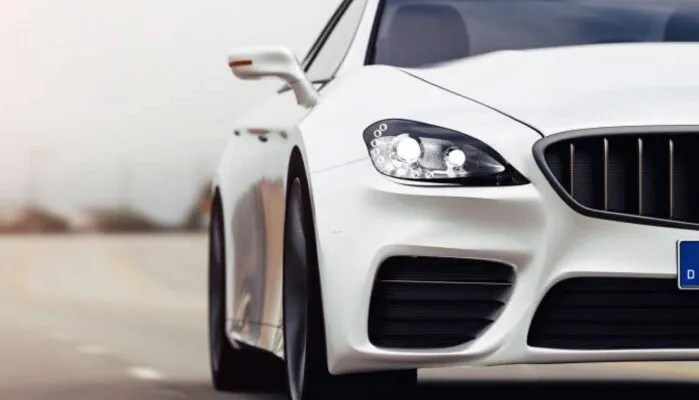
Which Mirror Is Used In The Headlights Of A Car

Cars Advice Guides Which Land Rover Car Headlights Sports Luxury

Concave Vs Convex Mirrors In Cars

Car Headlights

Why Are Concave Mirrors Used In Headlights Socratic

Concave Vs Convex Mirrors In Cars

